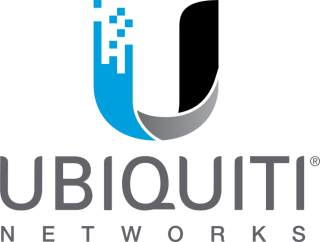Data segregation is a critical yet intricate process in data management, especially when businesses undergo changes such as mergers, acquisitions, or divisions. For data analysts, understanding and implementing proper data segregation is paramount to ensuring system integrity, maintaining compliance, and optimizing operational efficiency.
This guide will explore the three essential steps to execute data segregation effectively while minimizing disruptions.
What Is Data Segregation?
At its core, data segregation involves isolating data into distinct categories or partitions to avoid unauthorized access and ensure each entity or department has access to only the necessary data. This process is particularly vital when one organization splits into two or more independent entities.
For such situations, data analysts need to focus on separating data infrastructures, applications, and access controls while maintaining operational continuity. The result? Improved data security, streamlined operations, and reduced risks of breaches or compliance issues.
Why Is Data Segregation Crucial?
- Enhances Security: By isolating sensitive information, unauthorized access is prevented, and the likelihood of data breaches is reduced.
- Improves Efficiency: Segregated data structures ensure that employees interact only with the data relevant to their workflows, boosting productivity.
- Protects Confidentiality: Segmentation ensures critical information like financial or personal data remains strictly accessible to authorized personnel.
- Supports Legal and Compliance Needs: Organizations can align with regional and industry-specific regulations more effectively by segmenting data appropriately.
3 Steps to Achieve Secure and Efficient Data Segregation
1. Develop a Strategic Roadmap
The foundation of successful data segregation lies in strategic planning. This involves defining the scope, objectives, and methodology for segregating data assets. Begin by answering the following key questions:
- What data needs to be separated?
- What are the legal and compliance requirements involved?
- How can operational continuity be maintained?
Here are specific measures to follow during this step:
- Data Audit: Conduct a thorough inventory of your existing data assets, focusing on identifying critical and sensitive data.
- Transition Services Agreement (TSA) Planning: For organizations undergoing structural changes, prepare a robust TSA to lay out the rules for transitioning shared data systems into separate infrastructures.
- Clear Access Guidelines: Establish policies defining who can access specific data sets, ensuring compliance with security and governance standards.
A critical element is addressing historical data and active transactions. Analysts need to devise strategies for managing legacy data while preventing disruptions in ongoing processes.
2. Choose a Segregation Strategy
The next step involves determining how to execute the data segregation itself, especially when working with enterprise resource planning (ERP) systems like SAP. Two primary approaches offer different benefits based on the organization’s needs:
a. Company Code Segregation
This approach involves creating a new organizational structure within the existing ERP system. Key highlights include:
- Migrating relevant transactions and data to support the operation of the new entity.
- Building processes that ensure independent operations for both the original and the new entity.
- Minimizing disruptions by maintaining shared functionality where viable.
b. Carve-Out Strategy
Here, a clone of the existing system is created for the new entity, replicating the operational structure of the original company. Benefits include:
- Seamless migration of processes and functionalities for an efficient transition.
- Independent operation of the new entity while leveraging tested and established configurations.
Considerations for Selection:
- Analyze the risk tolerance of your organization during the transition.
- Evaluate the connectivity of IT systems within the organization.
- Define the desired degree of independence between entities.
3. Engage Third-Party Partners Early
Data segregation projects often involve multiple stakeholders, including technology vendors, financial institutions, and specialized partners. Early collaboration with third-party experts can streamline processes and avoid unnecessary delays.
Key Actions for Collaboration:
- Build a Dedicated Project Team: Create a team responsible for overseeing the segregation project. This team should include representatives from all involved parties and departments.
- Conduct SWOT Analyses: Analyze the potential strengths, weaknesses, opportunities, and threats related to third-party integration to preemptively address challenges.
- Establish Regular Communication: Maintain consistent touchpoints and alignment meetings to ensure all parties are updated on project timelines and developments.
A prime example of leveraging external expertise is Cognizant’s recent collaboration with Kohler Co., where the carve-out strategy was successfully implemented to split systems like SAP ECC, Salesforce, and CRM applications across two fully independent entities in under six months.
Bonus Tips for Seamless Data Segregation
To minimize risks and enhance results when segregating data, consider these best practices:
- Leverage Automation Tools: Reduce manual work by adopting automation for repetitive tasks like validation and data cleansing.
- Maintain Robust Data Governance: Implement regular data quality checks, manage access controls diligently, and establish standardized protocols for system integrity.
- Phased Transition: Prioritize immediate operational needs and adopt a gradual approach to address more complex segregation challenges during the TSA.
- Provide Training for Support Teams: Equip your team with the skills and knowledge required to handle new processes and systems during the transition.
Final Thoughts
Secure and efficient data segregation is a high-stakes yet essential endeavor for organizations undergoing structural changes. By developing a detailed roadmap, selecting the right segregation strategy, and engaging with third-party experts, data professionals can ensure operational continuity without compromising on security or efficiency.
Data segregation done right is more than just a technical requirement—it’s a strategic advantage that empowers enterprises to stay resilient and focused during transitions.
Whether you’re embarking on a carve-out, merger, or acquisition, the right approach to data segregation will protect the integrity of your systems and position your organization for sustainable growth.










